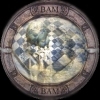
Colours
The explanation of the rainbows colours was first shown by Isaac Newton around 1667. He had already shown that light was a mixture of colours which could be shown by the use of a prism. In the same way he argued that water droplets in the air dispersed the various colours in various directions, so that the colours of the spectrum were seen.
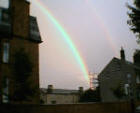
It was attributed to the refraction [bending] of light at a water drop followed by the reflection inside the water drop, the light ray finally emerging into the air. A bit like a prism.
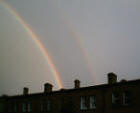
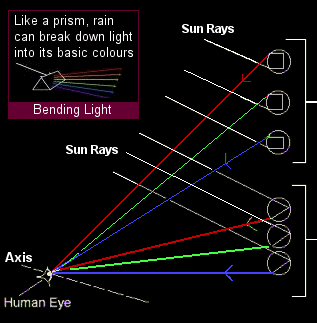
Secondary Bow
Sometimes a secondary bow is seen higher in the sky and is formed by rays undergoing two refractions and two reflections at the "droplet".
Primary Bow
The primary bow is the rainbow usually seen which is obtained by two refractions and one reflection as the rain drops fall down from the sky.
Deviation of Light by a Sphere
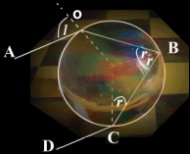
Suppose a ray of light, ( shown as a 0 ) in air is incident on a sphere of glass or a drop of water. The light is refracted [bends] at 0, then reflected inside B and finally emerges into the air along the points C and D.
If i and r are the angles of incidence and refraction at 0 ,the deviation of light at 0 and C is ( i - r ) each time it is ( 1800 - 2r ) at B
The total deviation $ in a clockwork direction can be shown by the following equation.
$ = 2 ( i - r ) + 1800 - 2r = 1800 + 2i - 4r
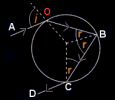
It can be seen that the deviation at each reflection is (i-r) this shows that a ray undergoes two reflections inside the sphere and two refractions as shown below. the total deviation in a clockwise direction is equal to
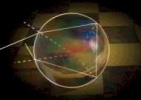
2( i - r ) +2 ( 1800 + 2r )=3600 + 2i -6r.
after n reflections the total deviation
= 2( i - r ) +n ( 1800 - 2r )
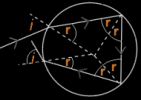
Types of reflection

from a smooth or polished surface.
The angle of incidence is equal to the angle of reflection
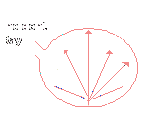
from a uniformly matt surface.
The brightness of the reflection does not change much with point of view.

from a semi-gloss finish.
e.g. egg-shell finish.
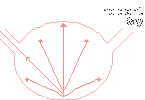
Rays from porcelain or synthetic enamel surfaces